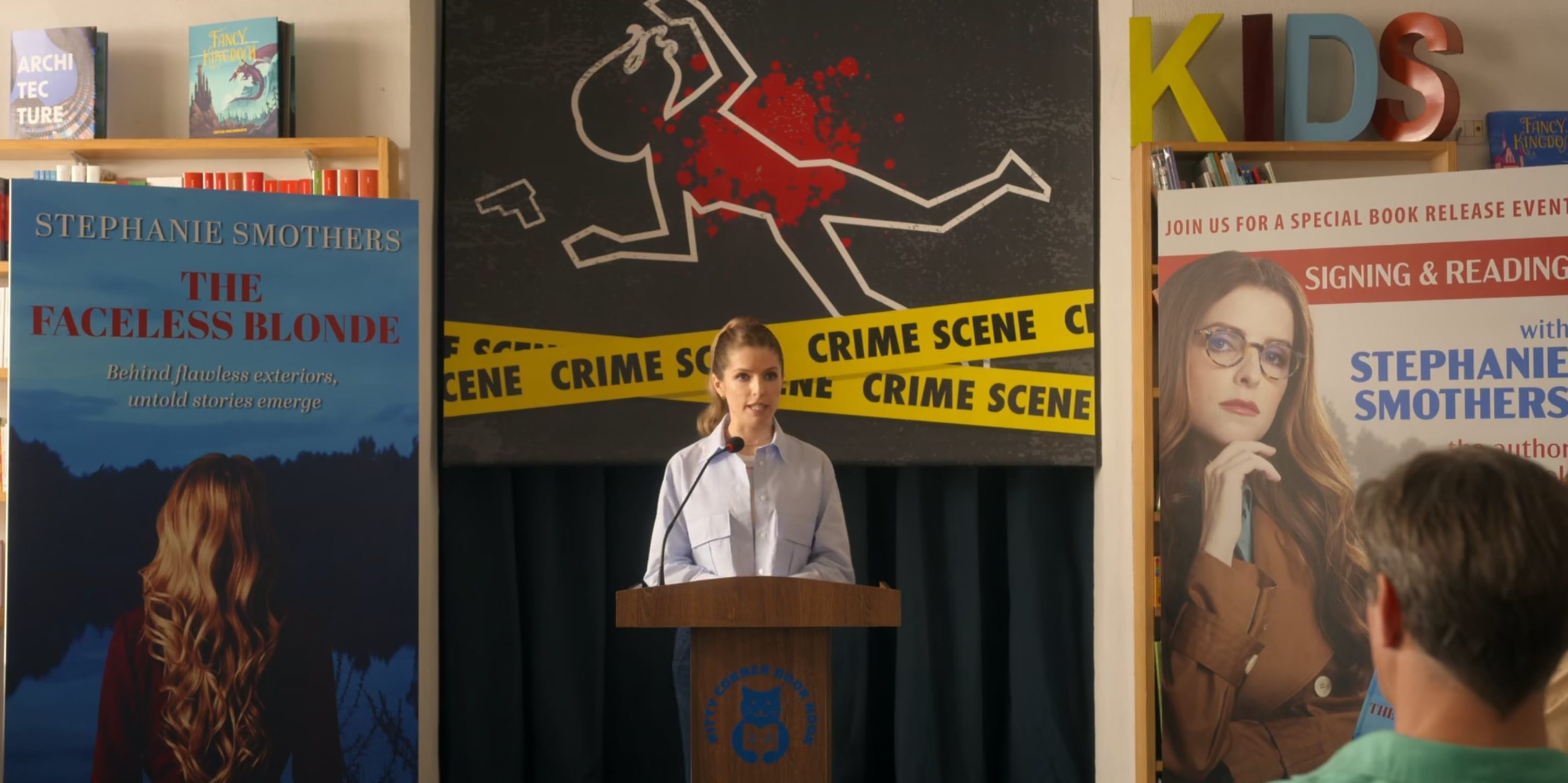In ‘Another Simple Favor,‘ we return to the world of vlogging through the eyes of Stephanie Smothers, who is busy racking up views on her true crime vlog ‘A Pinch of Murder.’ After thwarting Emily in the first movie, the protagonist develops a keen interest in figuring out the truth behind other crimes. It details her growth from a fledgling investigator into a more practiced sleuth in the sequel. However, vlogging is not her only source of income as Stephanie also dabbles in the world of literature, producing a true crime novel of her own, titled ‘A Faceless Blonde,’ which is based on her experiences from the original film. It shows how the character has embraced a new identity as a public figure, drawing more attention as someone who is an expert on criminal activities.
A Pinch of Murder is a Fictional True Crime Vlog
Like the first movie, ‘Another Simple Favor’ begins its narrative with Stephanie narrating her story on her livestream vlog. In the sequel, the vlog is titled ‘A Pinch of Murder,’ a true crime show that contrasts the cooking channel she was running at the start of the original movie. It is a fictional program created by scriptwriters Jessica Sharzer and Laeta Kalogridis. Although it has no real-life counterpart, it shares its name with a cooperative mystery board game published by Think Fun. It involves solving and analyzing case files for the murder of Harold Green in 1983, which is an entirely different premise from the vlog at the center of the movie. To that end, the similarities between the two entities are largely superficial and do not extend beyond the true crime angle.

In the movie, ‘A Pinch of Murder’ becomes the center of attention after we learn that Stephanie has stopped posting online content at the start of the film. A few days back, she tracked down an alleged pedophile who was masquerading as a swimming coach at a local school. After accusing him and setting the police on him, the man confronted Stephanie with a gun in his office. However, instead of killing her, he shoots himself, leaving the protagonist with a boatload of trauma and guilt over what she has done. As the narrative progresses, we see her return to posting more regularly, especially as she gets entangled in Emily’s affairs once more, which calls for more content on the fly. Thus, the vlog brings a layer of immersion into the story, showcasing Stephanie’s development, even though it remains a fictional creation.
The Faceless Blonde: A Novel That Adds to the Meta Aspects of the Story
In addition to running her vlog, Stephanie also starts her career as a writer in ‘Another Simple Favor’ by publishing her novel ‘The Faceless Blonde.’ While it helps illustrate the continuity between the two movies, the book is fictional in conception and brought to life by Jessica Sharzer and Laeta Kalogridis. As per the movie, the novel is inspired by Stephanie’s experiences from ‘A Simple Favor,’ with the titular character referencing Emily. However, it brings an element of meta-fiction into the story because the original movie is adapted from Darcey Bell’s eponymous 2017 novel. Therefore, ‘The Faceless Blonde’ is centered on a story already captured in a real-life novel. It makes it hard to distinguish the two from each other as they walk the tightrope between fiction and reality, albeit leaning more towards the former.

The novel’s release is of utmost importance in the movie because it helps Stephanie gather more interest in her projects and her vlogs. However, her book agent, Vicky, feels that the protagonist needs a new idea for a hit novel, mainly because the intrigue for ‘The Faceless Blonde’ plummets with time. Therefore, the novel’s receding sales indirectly contribute to Stephanie making the trip to Capri, Italy, to attend Emily’s wedding as her maid of honor. She hopes that by accompanying her previous tormentor and friend, she might be able to glean additional material that might be useful in drafting a new novel. To that end, the book plays a pivotal role in the narrative, adding an element of art reflecting real life, even though it is primarily drawn from the imagination of the writers.


